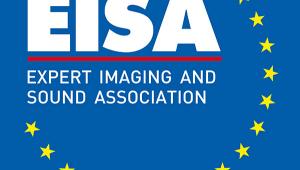JBL CD350/SA550 Classic

 With visuals inspired by JBL’s hi-fi products from the 1960s, the brand’s ‘Classic’ range of separates are populated by technology familiar to audiophiles some 60 years later...
With visuals inspired by JBL’s hi-fi products from the 1960s, the brand’s ‘Classic’ range of separates are populated by technology familiar to audiophiles some 60 years later...
Think JBL and, not unreasonably, you’ll probably think ‘speakers’. The company has been in the loudspeaker business for getting on 80 years, having been founded in California in 1946 by James B Lansing, from whom it takes its name. Lansing himself took his own life just three years later but left an insurance policy to keep the company going, in which form JBL has become an internationally famous audio company and, since 1969, part of what is now Harman International. In 2017 Harman became an independent subsidiary of South Korea’s technology giant, Samsung.
No apologies for starting this review with a history lesson, for in recent times JBL has been making much of its past, with reinventions of speakers from the mighty horn-loaded Project Everest DD67000 [HFN Aug ’14] and Project K2 S9900 floorstanders to the Classic range with its retro Quadrex foam grilles. Yes, it also makes Bluetooth speakers, soundbars, wireless headphones and the like, but it’s hard not to view the brand as having at least one foot in its past – and that’s what the CD player and integrated amplifier seen here look to leverage.
Blast From The Past
With all those loudspeakers, it’s easy to forget that JBL once made ‘domestic’ amplifiers, and the £599 CD350 Classic CD player and £1899 SA550 Classic integrated amplifier draw on the styling of the company’s 1960s SA600 amp. The latest industrial design includes retro fascia styling and walnut wood veneer side panels that match JBL’s current Classic and Studio Monitor speakers.
Launched at the 2023 Munich High End show, but reviewed for the first time here, the CD350 and SA550 are part of a larger range. This includes a more powerful amp, the SA750 with Dirac Live room correction at £2750; a network player, the £649 MP350; and even a turntable, the direct-drive TT350, at £750 complete with retro S-shaped arm and an Audio-Technica cartridge. So, add in a pair of those Classic JBL speakers, and you can build a complete end-to-end one-brand ‘retro’ system.
Looking beyond the products’ mid-’60s styling, what lies within has to be sufficiently contemporary that the CD350/SA550 can compete outside of the current retro bubble. This is being fuelled, in part, by so many companies celebrating significant anniversaries. While different brands have their own take on what should be under the lid, most are adopting the ‘classic on the outside, modern on the inside’ approach, as exemplified by NAD’s C 3050 LE amplifier and the re-imagined Leak Stereo amps from IAG. This is also the approach adopted by JBL in its design of this ‘retro’ amp and CD player.
There are features here unimaginable decades ago, from the USB stick playback offered by the CD player to the amplifier’s built-in DAC and Bluetooth capability. And the SA550’s Class G power amplification, with its 150W/4ohm rating, is also way beyond what was on offer from amplifiers of yesteryear. So, I think we can safely say that this thoroughly up-to-date player and amp are ‘Classic’ in name and styling only!
Burning Ambition
The CD350 will handle CD, CD-R and CD-RW discs, and can also play FLAC, WAV, MP3, AAC and WMA files stored on recordable media. I for one can’t remember the last time that I burned files to a CD-R/RW blank, and indeed it’s hard to find a computer these days with an onboard disc-burner, but I guess if you’re prepared to invest surprisingly little money in a USB drive, and a tenner or so on a pack of CD-R blanks, the CD350’s capability may appeal. (Incidentally, I note with some amusement that you can now buy Verbatim ‘Vinyl CD-Rs’, printed on one side with a facsimile of a 45rpm single, complete with a label at the centre.)
For those of us who’ve moved on from burning discs, the CD350 will also play music from memory devices plugged into its rear-panel USB-A port. As with the CD-R/RW playback, this will accept FLAC or WAV files at up to 96kHz/24-bit, but using the facility is hardly that convenient. In practice you can use the remote’s up/down keys to select between folders on the ‘stick’, but beyond that the machine will simply play files in chronological order. Perhaps with some nifty structuring of files before they’re copied to the USB device this could be handy for a ‘hit play and leave it’ party mix, but otherwise I can’t see this being a facility I’d use too much.



















































